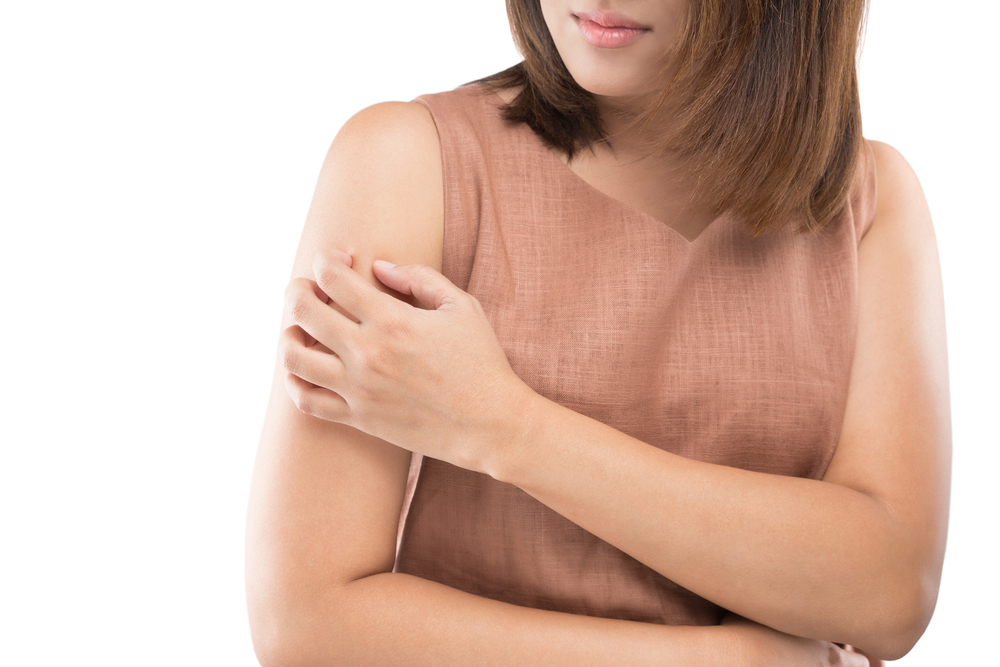Whenever you hear the word “infection,” you probably cringe. Unfortunately, infections come in many forms, commonly on the skin. These skin infections can be uncomfortable and unsightly, causing some distress to those who have them (and maybe to those who see them).
Luckily, for the most part, skin infections aren’t serious, but they may require medical intervention if over-the-counter topical treatments can’t clear them up. Let’s look beyond the surface to learn more about fungal skin infections and how to deal with them…
What Is a Fungal Skin Infection?
The Cleveland Clinic explains that fungus is very common and includes mold or mildew. While they can be found in the air and water, they can also land on the skin. This can have some negative impacts, such as causing an infection.
However, only about 50-percent of fungi are harmful. The telltale signs of a skin infection are usually a rash or another symptom, such as feeling itchy. Furthermore, there are some risk factors for developing a fungal rash, such as having a weakened immune system. Next, let’s take a look at some types of fungal skin infections.
Athlete’s Foot
This is a fairly common type of skin infection that, as the name suggests, affects the feet. WebMD explains the condition, also called tinea pedis, is from fungi that thrive in public swimming pools and showers. This fungus is also often present in hot, humid climates. Those who wear tight shoes or damp/sweaty socks could be at higher risk of developing athlete’s foot.
Symptoms of athlete’s foot include “peeling, cracking and scaly feet,” as well as blisters, itchiness, or a burning sensation, notes WebMD. A doctor can provide a topical antifungal treatment, and in some cases, oral treatment may be administered. Finally, keeping your feet dry and wearing shower sandals in public baths may help prevent it from happening in the first place.
Nail Fungus
While not technically a skin infection, we’re including this one because if left untreated, in some cases it can spread beyond the nail and onto the surrounding skin, notes the Mayo Clinic. Nail fungus, also referred to as onychomycosis, starts as a “white or yellow spot under the tip of your fingernail or toenail.” It can then thicken the nail and cause crumbling as it progresses.
In some mild cases, treatment may not be necessary. While there are some over-the-counter treatments you can try, the condition can be painful and in this case, will need to be looked at by a doctor, especially if the nail has become thickened or if you have diabetes. Nail infections can start as athlete’s foot, and a severe case of nail fungus “may lead to other serious infections that spread beyond your feet.”
Ringworm (of the Body)
As Healthline explains, this type of skin infection actually has nothing to do with worms, it is a fungus. It can occur on different parts of the body, but is common on the torso and limbs, adds the source. The main symptom of ringworm is “a ring-shaped rash with slightly raised edges,” which lends itself to the name.
The infection (which is often itchy) is “highly contagious” and the rash can spread. Thankfully, it can be treated effectively with an antifungal cream. There is another type known as scalp ringworm that mostly affects children and causes hair loss, which can also often be reversed with treatment.
Tinea Versicolor
You may not have heard of this fungal/yeast skin infection, but it’s the result of an overgrowth of the Malassezia fungus. More than 90-percent of adults already have it present on their skin. The infection causes small, oval patches to appear on the skin’s surface and is most common on the back, chest, and upper arms.
These patches may be lighter or darker than surrounding skin, and can also be red or pink. They can also be itchy, flaky, or scaly. Tinea versicolor, also known as pityriasis versicolor, is more common during summer and in areas with a warm and wet climate. While over-the-counter antifungal medications can help eliminate the patches, you may want to contact a doctor for a stronger treatment if they don’t work.
Cutaneous Candidiasis
Medical News Today explains this type of skin infection is caused by Candida, “a naturally occurring fungus that everyone has on their body.” However, certain conditions can cause this fungus to grow out of control. For example, hot/humid weather, poor hygiene, wearing tight/rubbing clothing, pregnancy, and health conditions (such as diabetes) are all possible causes.
When candidiasis affects the skin, it can cause a rash, scaling, and even swelling. “These symptoms often occur in areas of the body that are more difficult to keep dry and in places where skin touches skin,” (such as in the armpits) adds the source. While it can be itchy, there are over-the-counter antifungal treatments, such as miconazole and clotrimazole, that can help clear it up.
Prevention Is Key
Thankfully, there are ways to help a fungal skin infection from developing in the first place. They include practicing proper hygiene and not sharing clothing or towels. Speaking of clothing, make sure you wear clothes and shoes that are clean and allow proper ventilation.
In addition, make sure you dry yourself off properly when using a public pool or even your own shower. Wipe down shared surfaces at the gym before using them, and avoid animals that have missing fur or that are frequently scratching. While many of these skin infections aren’t serious, they are treatable with non-prescription or medical-grade remedies.










